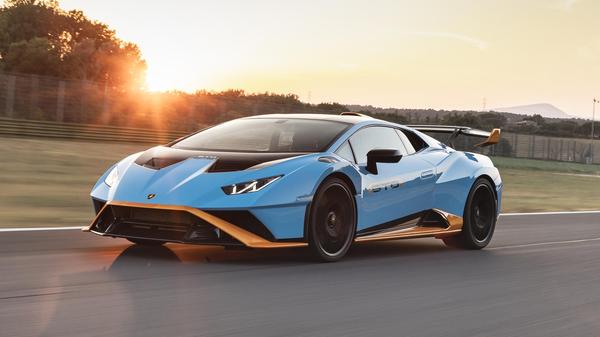Best Of
Best track day cars
Want to test your car and driving skills to the limit? A track day is the safest place to do it – here are the best cars to buy for taking to a circuit


Words by: Dan Trent
Published on 31 March 2022 | 0 min read
As performance cars get faster and more capable the opportunities to enjoy them safely, responsibly and legally on our busy roads become fewer and further between. So, if you’ve got a fast car and enjoy your driving a track day is the perfect way to explore your limits – and those of your car – in relative safety. The opportunity to literally follow the tyre tracks of your racing heroes and drive at iconic venues like Silverstone, Brands Hatch or Goodwood is also a huge thrill any enthusiast can enjoy.
Pretty much any car can be fun to drive on track but we’ve picked out some of the best for the job and, if you’re feeling inspired, check out our hints and tips below for all you need to know about driving on a track day. Track day Q&A What is a track day? How much does a track day cost? Can I take my car on track? Do I need a helmet for a track day? What happens on a track day? Will a track day damage my car?
Pretty much any car can be fun to drive on track but we’ve picked out some of the best for the job and, if you’re feeling inspired, check out our hints and tips below for all you need to know about driving on a track day. Track day Q&A What is a track day? How much does a track day cost? Can I take my car on track? Do I need a helmet for a track day? What happens on a track day? Will a track day damage my car?

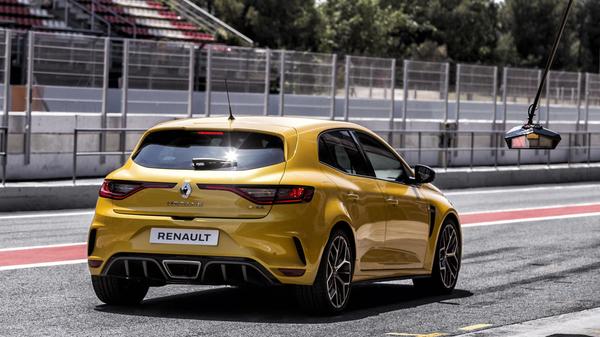
Toyota GR Yaris
For a company sometimes accused of building boring ‘white goods’ cars Toyota actually has a number of models that are great fun on track, including the Supra and GR86. Although inspired by rallying the GR Yaris would be our pick, though. It’s even offered with an optional Circuit Pack as well, this including retuned suspension, stickier Michelin tyres and a more sophisticated version of the nifty all-wheel drive system. This is on top of the already impressive performance and powerful brakes, meaning the Yaris is built to stay the course of a day on track. And if it rains it’ll be even more fun and confidence inspiring, thanks to that rally breeding.
Read the review and search for a Toyota Yaris on Auto Trader
Read the review and search for a Toyota Yaris on Auto Trader
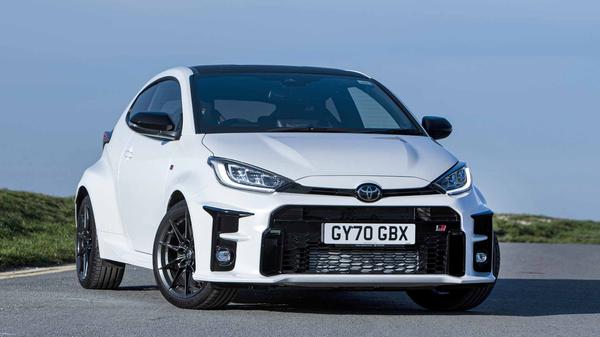
Porsche 718 Cayman GT4 RS
Any 718 Cayman is a fantastic car to drive on track, even the entry-level 2.0-litre version. If you live for track days, though, the GT4 RS is truly the ultimate. With the 500 horsepower engine from the 911 GT3, a specially tuned gearbox and a host of circuit-tuned fittings it’s probably more suited to driving flat out on a track day than it is on the road, in fact. Option in the Clubsport Package for the roll cage and harnesses to complete the effect, or go all in with the fancy Weissach Package with its lightweight wheels and exposed carbon fibre bodywork. This side of a proper racing car there’s nothing as fast or focused – just beware of noise limits because this is one loud little sports car!
Read the review and watch Rory’s video then search for Porsche Caymans on Auto Trader
Read the review and watch Rory’s video then search for Porsche Caymans on Auto Trader
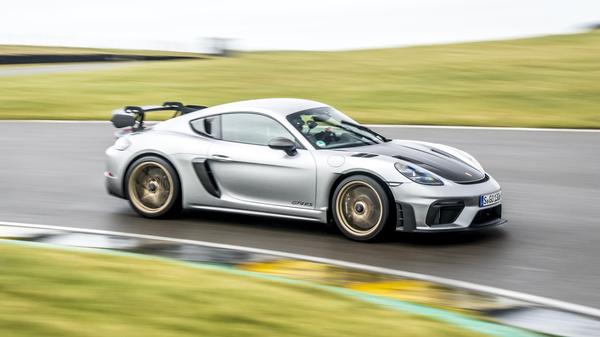
Mazda MX-5
The MX-5 isn’t especially powerful or even that fast, but it’s still a brilliant track car for the money. Because it’s rear-wheel drive it will teach you all you need to know about throttle control without scaring you silly while the delicate balance will reward your skills and carry surprising speed that might catch a few hot hatches napping. Most of all it’s fun, while the fact it is light means you won’t wear out your tyres or brakes as you might in a more powerful car. If you find the standard version a little too soft on track there are lots of aftermarket options for tuning the suspension and making it even more effective for circuit driving, too.
Read the review and search for a Mazca MX-5 on Auto Trader
Read the review and search for a Mazca MX-5 on Auto Trader
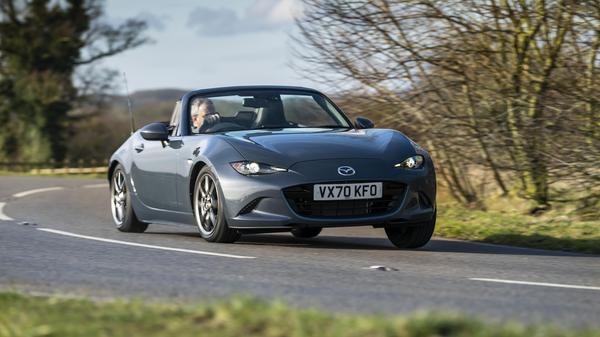
Hyundai i30 N
The team behind Hyundai’s performance N models are all track day enthusiasts themselves, so the i30 N combines all that passion and experience with blistering performance and a hugely enjoyable chuckability that really comes into its own on a track. The cheesily named N Grin Control system actually does what it claims as well, the N buttons on the steering wheel configuring everything from suspension and steering to throttle response and stability control to help you get the most out of your day. Manual versions will even blip the gears to make you sound like a pro as you downshift for corners.
Read the review and search for a Hyundai i30 on Auto Trader
Read the review and search for a Hyundai i30 on Auto Trader
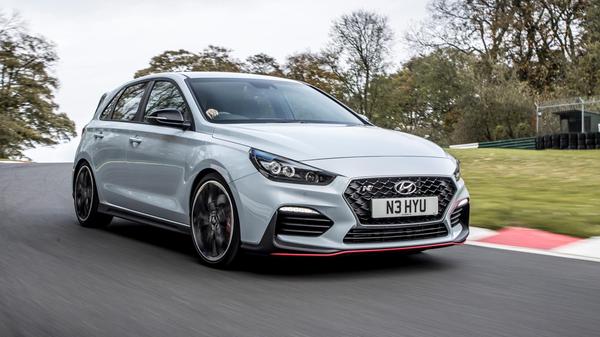
Caterham Seven
If you want to strip driving back to the absolute basics a Caterham Seven is still about the most exciting way to do it, Caterham having bought the rights to a design first created by Lotus back in 1957. That the formula of lightness and simplicity still works to this day is proof of just how good it was in the first place, the modern Caterham using up to date Ford engines but still true to those original values. A hoot on the road, a Seven is even more fun on the track, especially the tight and twisty ones we have here in the UK. Capable of running rings round fancier, more expensive sports cars, if you crave an intense adrenaline hit the Seven is still the one.
Read the review and search for Caterham Sevens on Auto Trader
Read the review and search for Caterham Sevens on Auto Trader
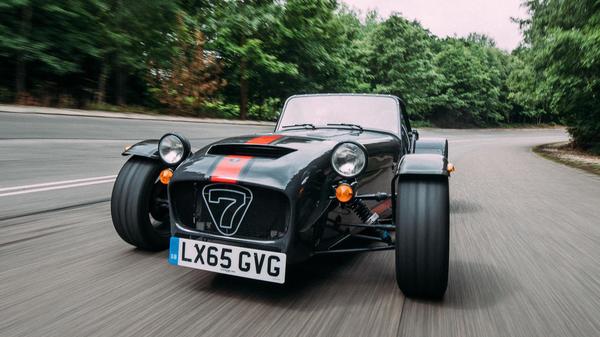
Renault Mégane R.S. Trophy
Renault’s hot hatches are among the best in the business, and are especially impressive on track. The latest Mégane Trophy combines punchy turbocharged power with a host of clever chassis technology to help you get the most of it. These include powerful brakes – essential for track driving – and a clever locking differential to help put the power down. Nifty four-wheel steering meanwhile makes it feel as agile as a car half its size and weight and a well-driven Mégane has the potential to embarrass cars with twice the power on a track day.
Read the review and search for Renault Meganes on Auto Trader
Read the review and search for Renault Meganes on Auto Trader
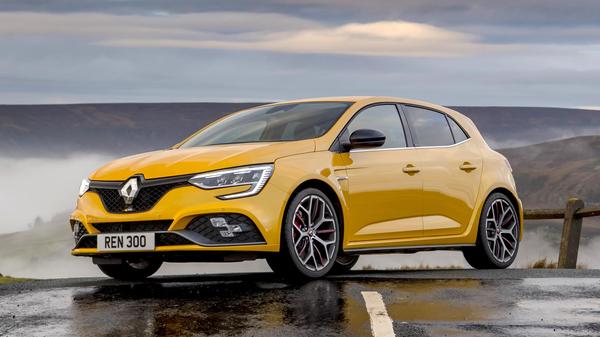
Mercedes-AMG A45 S
A few years back highly tuned four-wheel drive Subaru Imprezas and Mitsubishi Evos were kings of the UK track day scene but these days Mercedes-AMG has taken the idea and run with it, the A45 S deploying its incredible 421 horsepower through a sophisticated all-wheel drive system for incredible, all-weather performance. The super stiff suspension and powerful brakes come into their own on the track while the dedicated Drift Mode helps you throw some exciting angles, as Rory discovered when he put it to the test against its A35 little brother on track in his video. Just don’t expect your tyres to last long – or the track marshals to be happy – if you try drifting it round every corner.
Watch Rory’s A45 AMG video and search for a Mercedes-Benz A-Class on Auto Trader
Watch Rory’s A45 AMG video and search for a Mercedes-Benz A-Class on Auto Trader
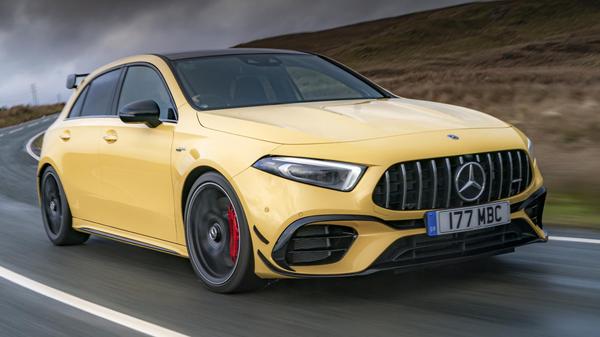
Alpine A110 S
The standard Alpine A110 is a gorgeous road car thanks to its compact size, lack of weight and surprisingly comfortable suspension. It would be fun on the track, too, but if that’s your goal Alpine has also tightened things up a bit with this S version, stiffening the suspension for improved response, increasing the power a tad and putting bigger tyres on for more grip. Because the engine is in the middle and drives the rear wheels the Alpine has wonderful natural balance and lovely steering out of the box, this S version letting you enjoy that to the full on a track. The fact it’s light also means it won’t cook its brakes or melt its tyres like bigger, more powerful alternatives so you’ll be able to drive it home safely afterwards as well.
Watch Rory’s A110 S video review and search for Alpine A110s on Auto Trader
Watch Rory’s A110 S video review and search for Alpine A110s on Auto Trader
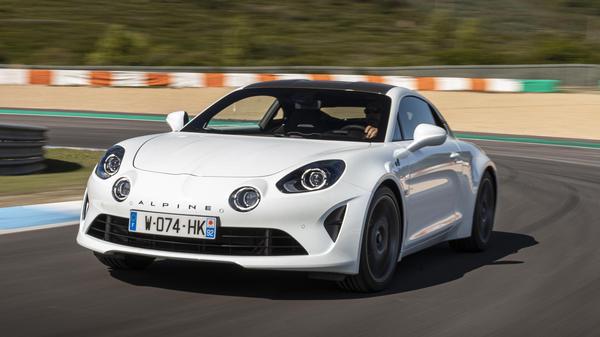
Alfa Romeo Giulia Quadrifoglio GTAm
Performance saloons like the BMW M3 have always been a firm favourite among track day fans and the latest version (and its M4 brother) are both brilliant fun on a circuit. But neither can match the Italian charm of the gorgeous Alfa Romeo Giulia Quadrifoglio, its 510 horsepower, Ferrari-based engine delivering all the drama and speed you could wish for. We’re fresh back from driving the even more track-focused GTAm version, with 540 horsepower, F1-honed aero, stripped out interior and racing seats. Truly a four-door supercar, the GTAm is amazing but sold out. Don’t worry, though. The ‘regular’ Quadrifoglio is pretty much as good and costs half as much…
Search for Alfa Romeo Giulias on Auto Trader
Search for Alfa Romeo Giulias on Auto Trader

Lamborghini Huracan STO
For all the dramatic looks, noise and incredible performance Lamborghinis haven’t always gone as well on track as rival products from Ferrari or McLaren, both of whom trade heavily on their experience in F1. Lamborghini doesn’t have that heritage but has been working hard to close the gap, this spectacular final fling for the Huracan channelling lessons learned in its Super Trofeo championship and participation in GT3 level sports car racing. The heavily revised bodywork delivers proper downforce, the sticky tyres mean it holds its line through the curves and the handling is way sharper and more rewarding than any Huracan we’ve driven before, making it a worthy participant for any high-rolling supercar track day. And did we mention the incredible noise it makes? Suffice to say, after driving it our ears are still ringing…
Watch Rory’s video, read the review and search for Lamborghini Huracans on Auto Trader
Watch Rory’s video, read the review and search for Lamborghini Huracans on Auto Trader
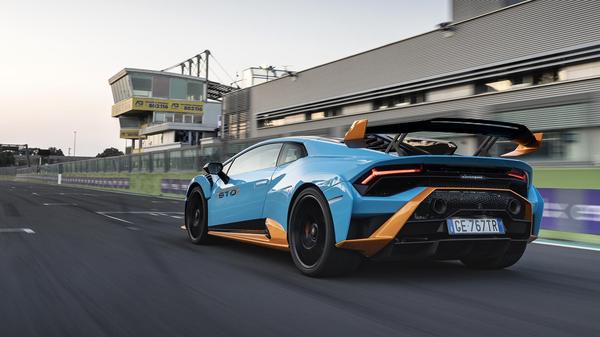
What is a track day?
Unlike a race a track day is an organised event where you pay to drive your regular road car on a circuit, without any timing or other competitive element. Put simply it’s an opportunity to drive your own car as fast as you feel comfortable going in a controlled environment, governed by strict rules to help you have fun as safely as possible.
Track days are typically run by circuits themselves or by independent operators who hire the track and then sell places on their events. They run at tracks all over the country and cater to drivers and cars of all experience levels. While the image may be of hardcore enthusiasts driving flat out in expensive supercars you can take literally any road-legal vehicle on a track day, though clearly some are more suitable than others. If in doubt check with the operator but most will clearly market their days as being for novices or more experienced drivers, or run the day in groups according to how fast you want to go. At the other end of the scale some circuits even offer more sedately paced ‘experience’ laps where you follow a pace car at a controlled speed. This is great for families who just want to see what a race track looks like without the pressure of faster drivers whizzing past. Given most track days don’t allow passengers under the age of 16 it’s also the only way to share the circuit experience with younger kids. Back to top
Track days are typically run by circuits themselves or by independent operators who hire the track and then sell places on their events. They run at tracks all over the country and cater to drivers and cars of all experience levels. While the image may be of hardcore enthusiasts driving flat out in expensive supercars you can take literally any road-legal vehicle on a track day, though clearly some are more suitable than others. If in doubt check with the operator but most will clearly market their days as being for novices or more experienced drivers, or run the day in groups according to how fast you want to go. At the other end of the scale some circuits even offer more sedately paced ‘experience’ laps where you follow a pace car at a controlled speed. This is great for families who just want to see what a race track looks like without the pressure of faster drivers whizzing past. Given most track days don’t allow passengers under the age of 16 it’s also the only way to share the circuit experience with younger kids. Back to top
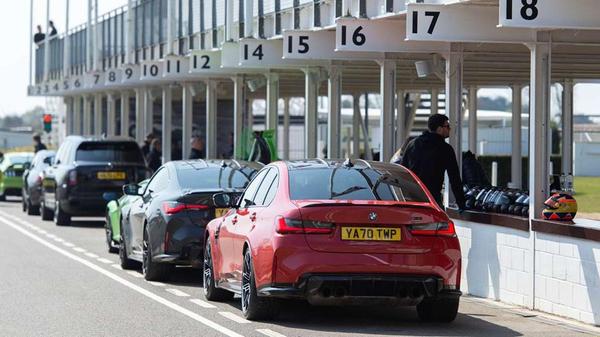
How much does a track day cost?
Like anything in life track days vary in cost, according to the venue, the operator and how much time you get on the circuit. Most start at around £150 or so, so-called ‘open pit lane’ days with no restriction on how much time you spend on track costing more. Likewise, ‘noisy’ days with higher limits for loud cars may cost more. More exclusive ‘supercar’ days attracting faster and glitzier vehicles may also cost a premium, but come with additional benefits like instruction and posher catering.
Expect to get through a lot of fuel on the day as well. Many circuits have filling stations on site but these can be even more expensive than public ones so scope out local forecourts so you can minimise your down time if you have to go out and fill up. If you push your car too hard or don’t warm up and warm down properly there’s a risk you could wear out brakes and tyres as well, so consider how you drive and take tips from organisers or more experienced track day drivers for the best advice. Back to top
Expect to get through a lot of fuel on the day as well. Many circuits have filling stations on site but these can be even more expensive than public ones so scope out local forecourts so you can minimise your down time if you have to go out and fill up. If you push your car too hard or don’t warm up and warm down properly there’s a risk you could wear out brakes and tyres as well, so consider how you drive and take tips from organisers or more experienced track day drivers for the best advice. Back to top
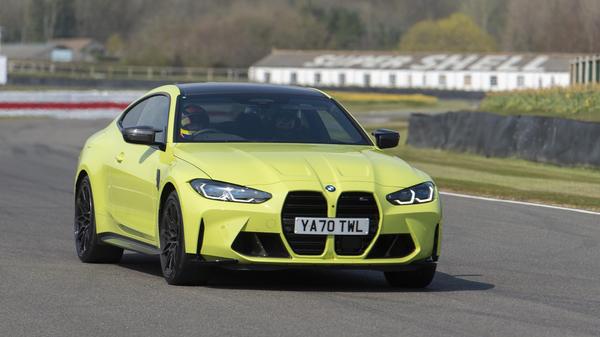
Can I take my car on a track day?
If you have permission to drive the vehicle, it’s taxed and road legal and you have a full driving licence you should be good to go. However, you should be aware it’s most likely not covered by regular insurance so if the worst happens you could be liable for the total loss value, which could be crippling, especially if the car is financed or leased.
You’ll be expected to accept that responsibility and will have to sign plenty of paperwork to that effect but it goes without saying you should only take your car on the track day with a ‘you bend, you mend’ mentality. For this reason many enthusiasts doing regular track days run an older or less valuable car that doesn't have so much money tied up in it should the worst happen. Specialist insurance is another option and most track day organisers can point you in the direction of a suitable provider. It won’t be cheap but it’s a lot better than the alternative. Another point to consider is whether your car is too noisy. Surprisingly, a totally road legal car may be too loud for the strict noise limits tracks have to observe and if you fail the noise test at the start of the day you may not be allowed out on track at all. If you think this may be an issue check beforehand with the operator and they should be able to offer advice. Circuits running track days should be happy to noise test your car if you’re passing, even if you’re not attending that event. It’s a quick job and could spare grief on the day itself. Back to top
You’ll be expected to accept that responsibility and will have to sign plenty of paperwork to that effect but it goes without saying you should only take your car on the track day with a ‘you bend, you mend’ mentality. For this reason many enthusiasts doing regular track days run an older or less valuable car that doesn't have so much money tied up in it should the worst happen. Specialist insurance is another option and most track day organisers can point you in the direction of a suitable provider. It won’t be cheap but it’s a lot better than the alternative. Another point to consider is whether your car is too noisy. Surprisingly, a totally road legal car may be too loud for the strict noise limits tracks have to observe and if you fail the noise test at the start of the day you may not be allowed out on track at all. If you think this may be an issue check beforehand with the operator and they should be able to offer advice. Circuits running track days should be happy to noise test your car if you’re passing, even if you’re not attending that event. It’s a quick job and could spare grief on the day itself. Back to top
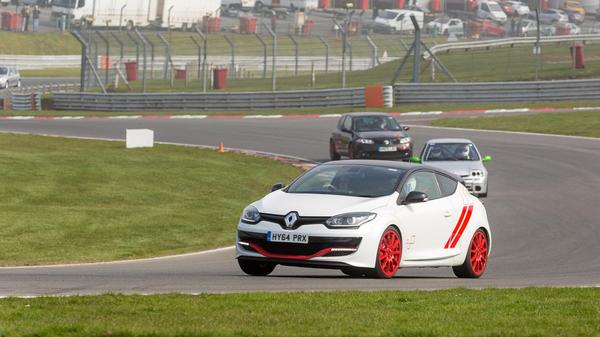
Do I need a helmet for a track day?
You will need a helmet before you’re allowed out on track, and many operators will insist this is a full-face one if you’re driving an open car. Don’t worry if you don’t have your own as most tracks will rent them out as required.
In terms of clothing you don’t need fireproof racing overalls or anything of that sort, though most circuits insist on trousers and long sleeves as a bare minimum. Dress comfortably and, if possible, wear shoes with thin soles so you can feel the pedals better. On the day make sure you take plenty of breaks, keep your fluid levels up and have plenty of snacks. Driving on track takes a lot of concentration and you’ll be surprised how tiring it can be! Back to top
In terms of clothing you don’t need fireproof racing overalls or anything of that sort, though most circuits insist on trousers and long sleeves as a bare minimum. Dress comfortably and, if possible, wear shoes with thin soles so you can feel the pedals better. On the day make sure you take plenty of breaks, keep your fluid levels up and have plenty of snacks. Driving on track takes a lot of concentration and you’ll be surprised how tiring it can be! Back to top
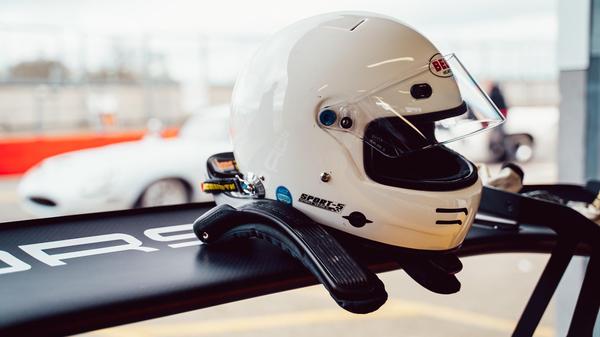
What happens on a track day?
Make sure you get there with plenty of time, even if this requires an early start. While many track days have switched to online briefings and registration since lockdown you will still need to sign on and you will probably have to show your driving licence to get your wristband.
If you haven’t already done your briefing online you’ll then be talked through how the day will operate by the organisers. This will include safety information specific to the venue, rules on overtaking, what the flag signals from the marshals mean and other important details. Make sure you attend and pay attention because many organisers will only issue you a driving wristband after the briefing. Before the track opens you will also have to do what’s known as a sighting lap, where a safety car will lead everyone round at slow speed so you have a sense of where the track goes. At some point before going on track your car will be noise tested to check it’s within the limits – this usually involves you revving the engine while a marshal records the sound. Once the day is up and running you’re free to drive the track at your own pace. Because it’s not a race overtaking rules are strictly enforced for everyone’s safety, so make sure you pay attention in the briefing for the specific rules. Usually this means you are only allowed to overtake on the straights and by the consent of the driver in front, so as to avoid any Verstappen-like moves on the way into corners. As such make sure you pay attention to your mirrors, though the marshals will also warn you with blue flags if a faster car is approaching from behind. Back to top
If you haven’t already done your briefing online you’ll then be talked through how the day will operate by the organisers. This will include safety information specific to the venue, rules on overtaking, what the flag signals from the marshals mean and other important details. Make sure you attend and pay attention because many organisers will only issue you a driving wristband after the briefing. Before the track opens you will also have to do what’s known as a sighting lap, where a safety car will lead everyone round at slow speed so you have a sense of where the track goes. At some point before going on track your car will be noise tested to check it’s within the limits – this usually involves you revving the engine while a marshal records the sound. Once the day is up and running you’re free to drive the track at your own pace. Because it’s not a race overtaking rules are strictly enforced for everyone’s safety, so make sure you pay attention in the briefing for the specific rules. Usually this means you are only allowed to overtake on the straights and by the consent of the driver in front, so as to avoid any Verstappen-like moves on the way into corners. As such make sure you pay attention to your mirrors, though the marshals will also warn you with blue flags if a faster car is approaching from behind. Back to top
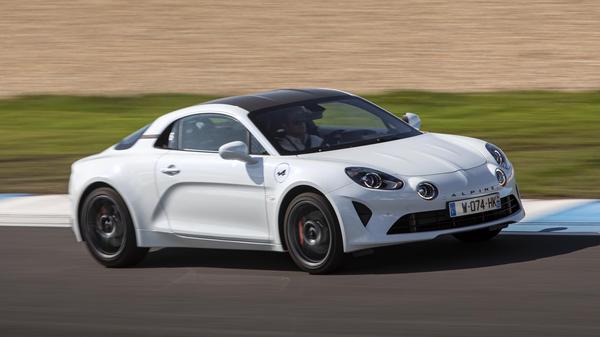
Will a track day damage my car?
Driving at speed on a track does put additional stress on your car, but you can mitigate this by first making sure everything is in top condition before going and also considering how you drive on the day. It’s also worth going through the car and getting rid of any loose items, as the last thing you want is stuff thumping around in the boot or rattling round in the glove box distracting you.
First up make sure your oil and coolant levels are all correct and your tyres and brakes are in good condition – the latter are going to work hard so this is especially important. Bring a pressure gauge if you have one because your tyres get very hot, increasing wear. Start steadily, do a few laps to warm everything up and then come into the pits and check your pressures. You’ll probably find they are way over what they normally are so drop them back down to the correct settings before going out again. If you stop for a period of time – say for lunch – then you’ll need a few laps to bring them up to temperature again, so don’t go flat out straight away. Managed properly they should last the day fine, which is important as you could be fined by the police if you’re stopped with unroadworthy tyres on the way home. It’s a good idea to keep your sessions short – 15 minutes or so should be plenty for car and driver – and make sure you do a slow lap before coming into the pits to cool your brakes and tyres. If possible leave the car in gear when you stop rather than use the parking brake to avoid warping the discs. At the end of the day when you drive home your tyre pressures will drop again, so you’ll probably need to top them back up again with a footpump or at a filling station. If your car has pressure warning sensors don’t be alarmed if these go off – once the car is cool and you’ve reset the pressures it should all sort itself out. Back to top
First up make sure your oil and coolant levels are all correct and your tyres and brakes are in good condition – the latter are going to work hard so this is especially important. Bring a pressure gauge if you have one because your tyres get very hot, increasing wear. Start steadily, do a few laps to warm everything up and then come into the pits and check your pressures. You’ll probably find they are way over what they normally are so drop them back down to the correct settings before going out again. If you stop for a period of time – say for lunch – then you’ll need a few laps to bring them up to temperature again, so don’t go flat out straight away. Managed properly they should last the day fine, which is important as you could be fined by the police if you’re stopped with unroadworthy tyres on the way home. It’s a good idea to keep your sessions short – 15 minutes or so should be plenty for car and driver – and make sure you do a slow lap before coming into the pits to cool your brakes and tyres. If possible leave the car in gear when you stop rather than use the parking brake to avoid warping the discs. At the end of the day when you drive home your tyre pressures will drop again, so you’ll probably need to top them back up again with a footpump or at a filling station. If your car has pressure warning sensors don’t be alarmed if these go off – once the car is cool and you’ve reset the pressures it should all sort itself out. Back to top
